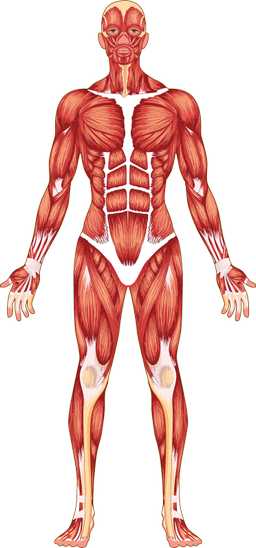Improving muscle strength (non-statutory)
I can design a fitness circuit to improve muscle strength.
Improving muscle strength (non-statutory)
I can design a fitness circuit to improve muscle strength.
These resources will be removed by end of Summer Term 2025.
Switch to our new teaching resources now - designed by teachers and leading subject experts, and tested in classrooms.
These resources were created for remote use during the pandemic and are not designed for classroom teaching.
Lesson details
Key learning points
- Muscles that are found close together on your body often help you to perform similar movements.
- Athletes focus their training on different muscles depending on their sport .
- Humans can improve the strength of their muscles through exercise, such as lifting weights.
- A complete fitness circuit should aim to improve the strength of different muscles in the body.
Keywords
Muscles - Muscles are parts of the body which pull, causing bones to move.
Athlete - An athlete is a person who is good at sports or physical exercise, especially one who competes in organised events.
Exercises - Exercises involve using effort to move our bodies so that they are fit and healthy.
Fitness circuit - A fitness circuit is a type of workout that involves doing exercises that target different groups of muscles.
Stretches - Stretches are when you extend your body, or a part of your body, in order to stretch your muscles.
Common misconception
May believe that if you have small, weak muscles you can’t make them bigger and stronger.
Show the children that through using certain exercises most people can make their muscles stronger.
To help you plan your year 3 science lesson on: Improving muscle strength (non-statutory), download all teaching resources for free and adapt to suit your pupils' needs...
To help you plan your year 3 science lesson on: Improving muscle strength (non-statutory), download all teaching resources for free and adapt to suit your pupils' needs.
The starter quiz will activate and check your pupils' prior knowledge, with versions available both with and without answers in PDF format.
We use learning cycles to break down learning into key concepts or ideas linked to the learning outcome. Each learning cycle features explanations with checks for understanding and practice tasks with feedback. All of this is found in our slide decks, ready for you to download and edit. The practice tasks are also available as printable worksheets and some lessons have additional materials with extra material you might need for teaching the lesson.
The assessment exit quiz will test your pupils' understanding of the key learning points.
Our video is a tool for planning, showing how other teachers might teach the lesson, offering helpful tips, modelled explanations and inspiration for your own delivery in the classroom. Plus, you can set it as homework or revision for pupils and keep their learning on track by sharing an online pupil version of this lesson.
Explore more key stage 2 science lessons from the Introduction to the human skeleton and muscles unit, dive into the full primary science curriculum, or learn more about lesson planning.

Equipment
See additional material.
Content guidance
- Risk assessment required - equipment
- Risk assessment required - physical activity
Supervision
Adult supervision required
Licence
Prior knowledge starter quiz
6 Questions





Assessment exit quiz
6 Questions


turn head
sketch a picture
carrying a rucksack
stand on your tiptoes
wave goodbye

hand and wrist muscles
arm and shoulder muscles
feet and thigh muscles
leg and buttock muscles




